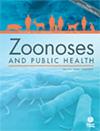Epidemiologic and tick exposure characteristics among people with reported Lyme disease – Minnesota, 2011–2019
Abstract
Aims and Methods
In the United States, blacklegged Ixodes spp. ticks are the primary vector of Lyme disease. Minnesota is among the states with the highest reported incidence of Lyme disease, having an average of 1857 cases reported annually during 2011–2019. In contrast to the Northeast and mid-Atlantic United States where exposure to ticks predominately occurs around the home, the circumstances regarding risk for exposure to blacklegged ticks in Minnesota are not well understood, and risk is thought to be highest in rural areas where people often participate in recreational activities (e.g. hiking, visiting cabins). We analysed enhanced surveillance data collected by the Minnesota Department of Health during 2011–2019 to describe epidemiologic and tick exposure characteristics among people with reported Lyme disease.
Results
We found that younger age, male gender, residence in a county with lower Lyme disease risk, residence in the Minneapolis-St. Paul metropolitan area, and an illness onset date later in the year were independently associated with higher odds of reporting tick exposures away from the home. We also describe the range of activities associated with tick exposure away from the home, including both recreational and occupational activities.
Conclusions
These findings refine our understanding of Lyme disease risk in Minnesota and highlight the need for heterogeneous public health prevention messaging, including an increased focus on peridomestic prevention measures among older individuals living in high-risk rural areas and recreational and occupational prevention measures among younger individuals living in the Minneapolis-St. Paul metropolitan area.

 求助内容:
求助内容: 应助结果提醒方式:
应助结果提醒方式:


